As another PGA Tour regular season came to an end, Brooks Koepka once again found himself in an enviable position. There was so much to savour from a decorated year that saw him earn more than $US9.5 million in winnings long before the FedEx Cup Playoffs even began.
But if you are a student of his personality, however, you would guess he was more likely to embrace the underdog role that blanketed his quest for the FedEx Cup.
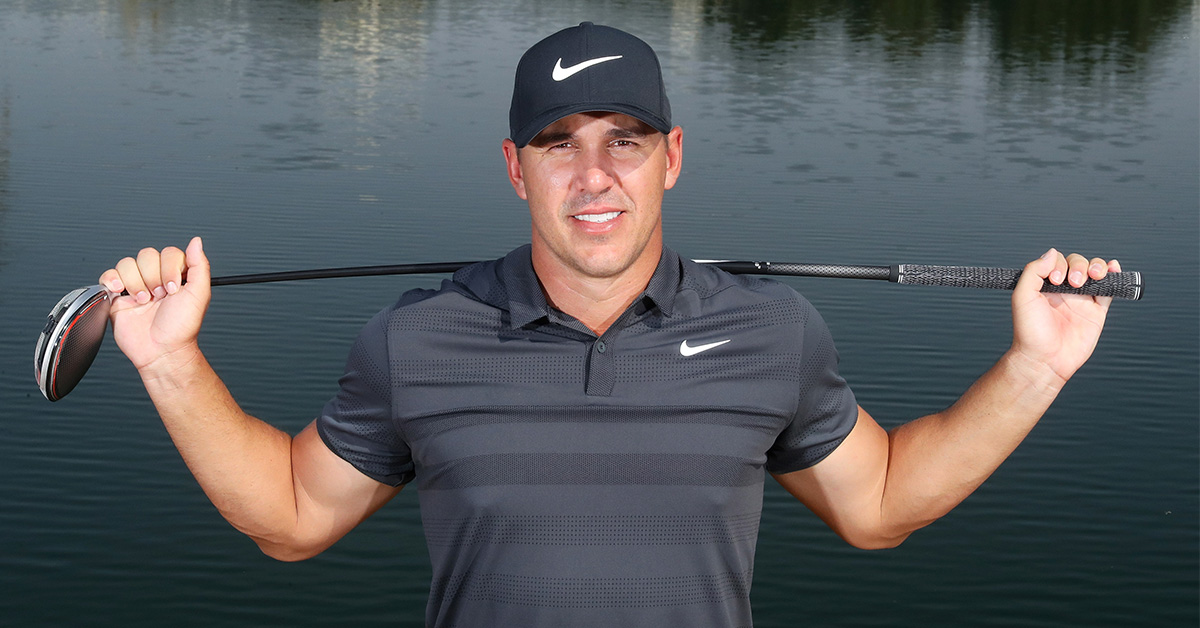
Underdog? Sounds implausible, no? After all, Koepka was firmly entrenched as No.1 in the Official World Golf Ranking coming into the Northern Trust, the first of three playoff events. And he arrived at Liberty National Golf Club still riding a wave of momentum from his stirring triumph in the World Golf Championship–FedEx St Jude Invitational. Not only did it make him the only three-time winner on the PGA Tour this season, but it came via a resounding final-round 65 to erode Rory McIlroy’s one-stroke lead.
What’s more, it added another layer of brilliance to the 29-year-old’s sixth PGA Tour season, one that has seen him finish T-2 (Masters), first (PGA Championship), second (US Open) and T-4 (Open Championship) in the four Major championships, and first in the regular-season FedEx Cup standings to earn a cool $US2 million Wyndham Rewards bonus. Throw in the $US1.745 million he captured for winning the WGC–FedEx St Jude event and another $US1 million for taking a season-long competition called the Aon Risk Reward Challenge (65 strategic holes during the course of the schedule are measured) and Sunday, July 28 was a tidy payday of $US4.745 million for Koepka.
“It’s incredible,” said Koepka, who since the start of the 2017 season has won six times on the PGA Tour – four of them Majors, one a World Golf Championship. He has finished first or second in 13 of his 51 PGA Tour starts (25 percent) in that time.
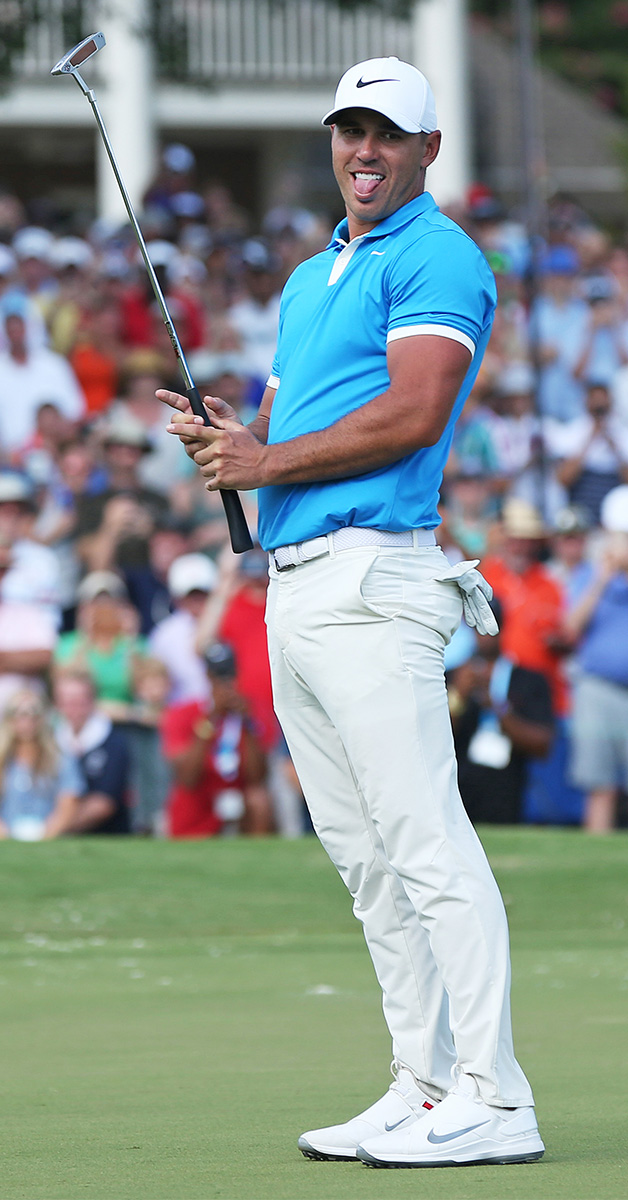 While “incredible” is an apt description of what his stash looks like, Koepka is in line to make it exponentially even more impressive should he continue his stellar play for the rest of the calendar year. That began in the FedEx Cup Playoffs, which had not yet started at the time of writing this story.
While “incredible” is an apt description of what his stash looks like, Koepka is in line to make it exponentially even more impressive should he continue his stellar play for the rest of the calendar year. That began in the FedEx Cup Playoffs, which had not yet started at the time of writing this story.
While Koepka entered the playoffs No.1, the overall goal was simple: win the Tour Championship and pile another $US15 million into the wheelbarrow.
That would require beating an array of world-class players such as McIlroy, Matt Kuchar, Xander Schauffele, Gary Woodland, Patrick Cantlay, Dustin Johnson, Paul Casey, Jon Rahm and Justin Rose, who combined for 12 PGA Tour wins this year and entered the postseason inside the top 10 in the FedEx Cup Standings. That’s not to mention defending Tour Championship winner Tiger Woods, or Rickie Fowler, Justin Thomas, Tommy Fleetwood, Adam Scott and Bryson DeChambeau, to name just a few.
That’s a lot of talent to run through, but Koepka first has earned the right to a deep exhale and to appreciate his regular-season success. “To look at what I’ve done this year, just show consistency and try to take my game to a new level – and I’ve done that,” he said.
“You want to be No.1 when the season’s done and going into the playoffs.”
Hard to argue with his mindset, but therein enters an equation that puts a different light on Koepka’s status. That’s because being No.1 in the regular-season FedEx Cup standings has not exactly been a position of strength. Truth is, it’s been a veritable jinx, as only two players have gone on to win the FedEx Cup after being No.1 in the regular season.
Tiger Woods did it in the debut of the FedEx Cup in 2007, then again in 2009, while Jordan Spieth accomplished it in 2015.
What’s more, players ranked No.1 in FedEx Cup points at the close of the regular season have won just four of 48 playoff tournaments between 2007 and 2018 – three for Tiger Woods, one for Spieth. Woods (in 2007) and Spieth (in 2015) are the only regular-season champs to win the Tour Championship, which is mandatory now for winning the FedEx Cup.
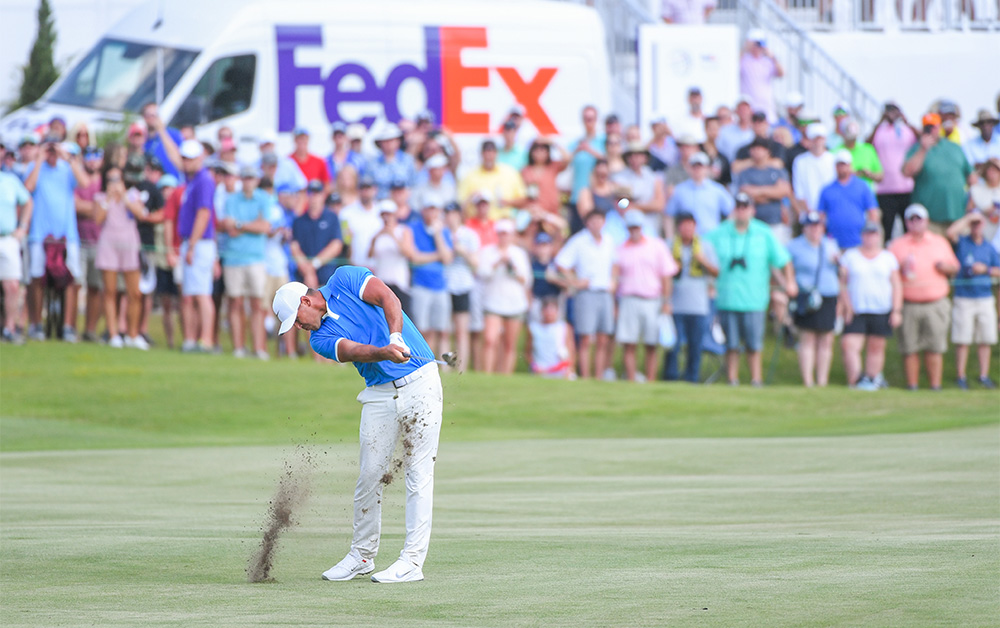
Study such data and you might wonder if Koepka agrees that history tells him he faces a daunting task.
Well, guess what? Bring it on, because this is the sort of him-against-the-world scenario that ignites his competitive fires.
“I always try to find something where I feel like I’m kind of the underdog, to kind of put that little chip on my shoulder,” Koepka said earlier this year at the PGA Championship. Though he was the defending champion at Bethpage Black that week, Koepka still came in beneath the radar, overshadowed by Woods, who had won the Masters a few weeks earlier, and those ranked 1-2 in the world, Johnson and Rose.
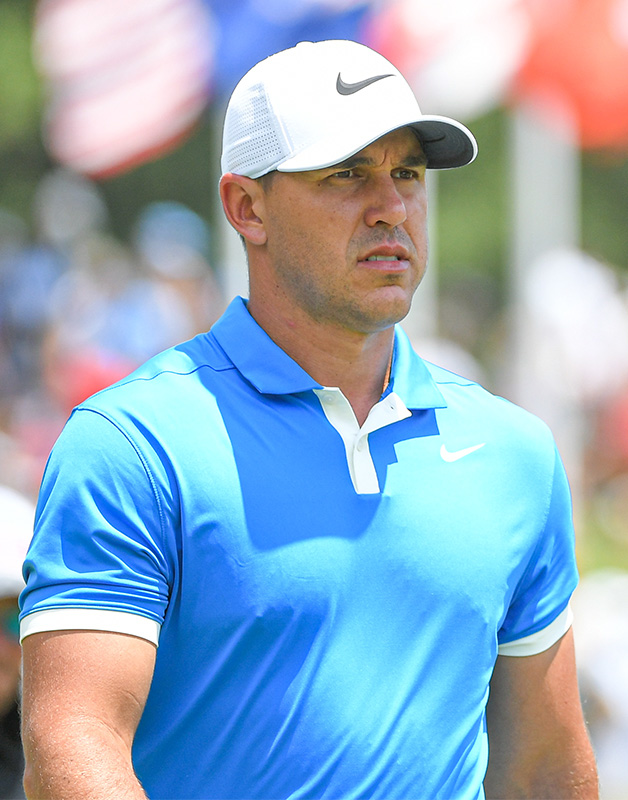 When he arrived for his pre-tournament press conference, Koepka watched the room of reporters empty out. They had their story, it seems; Woods had just left the interview room. Koepka took note and let folks know he had taken note. Then he went out and lapped the field, building seven-shot leads through 36 and 54 holes before winning by two. For a second straight year, Koepka had successfully defended a Major championship and he’s been cemented into the No.1 spot in the OWGR rankings ever since.
When he arrived for his pre-tournament press conference, Koepka watched the room of reporters empty out. They had their story, it seems; Woods had just left the interview room. Koepka took note and let folks know he had taken note. Then he went out and lapped the field, building seven-shot leads through 36 and 54 holes before winning by two. For a second straight year, Koepka had successfully defended a Major championship and he’s been cemented into the No.1 spot in the OWGR rankings ever since.
It’s a lofty position, yes, and one he doesn’t appear ready to give up. Not when he takes enormous pride in the long and unglamorous road he travelled. Never forgotten and worn like a badge of honour, Koepka was never handed sponsor exemptions or provided a taste of the good life right out of college. Those perks went to more heralded collegian colleagues. Koepka made a mental note, then hit the Challenge Tour – the secondary tour in Europe.
In other words, he did it the old-fashioned way. He earned it. He won on the Challenge Tour, graduated to the European Tour where he built upon his foundation with enough success to earn his PGA Tour card and pretty much all he has done since his rookie year is steamroll his way to the top.
No need to remind; as we said, he remembers, and he doesn’t worry about those who suggest he shouldn’t carry such a chip on his shoulder.
“I can think of plenty of people along the way telling me I’ll be nothing, working at McDonald’s,” he said back in May, before he won his fourth Major. “The whole time, you’re just trying to prove them wrong.”
And, now that he’s proven them wrong? Koepka can smile, nod his head, and let you just digest his accomplishments.
“Sometimes, your haters are your biggest motivators. I always feel like I’m overlooked. I couldn’t care less. It doesn’t bug me.”
Maybe not a lot, but just a little, just enough to keep that chip in place.
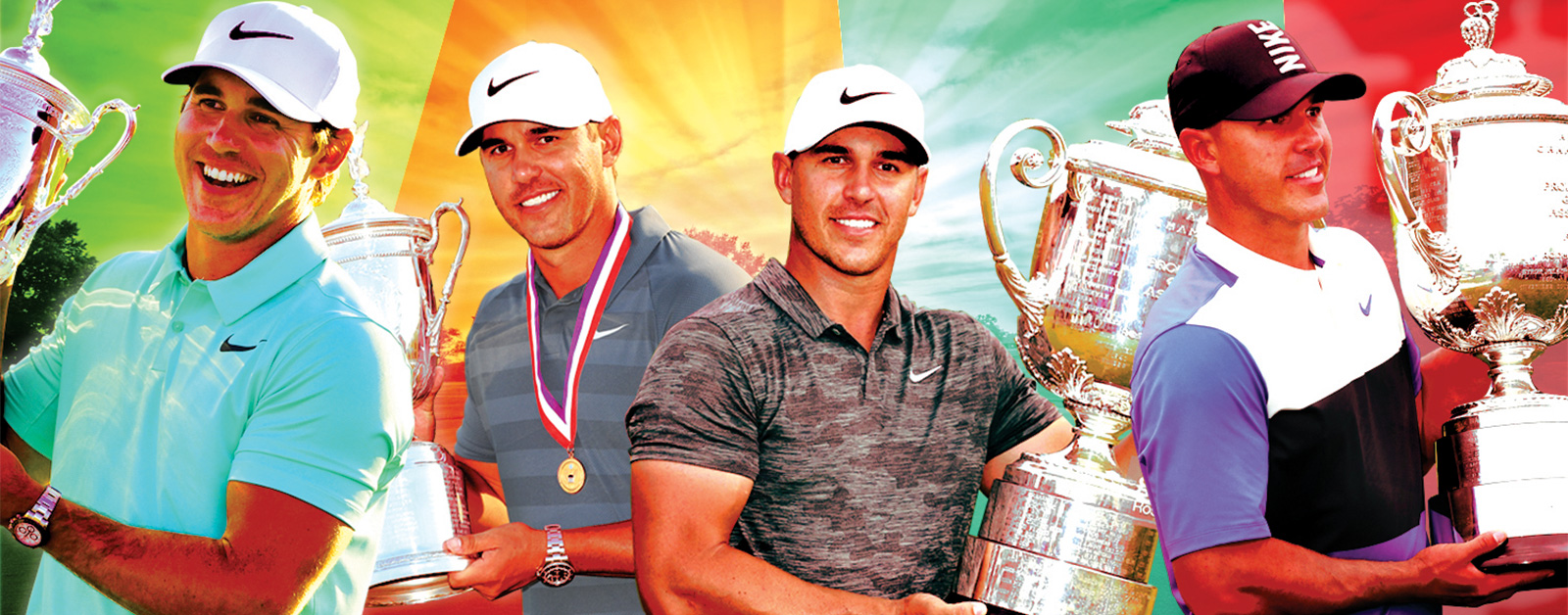
For Brooks Koepka, Reality Beats The Hype
Back in May, a week before our CBS broadcast of the PGA Championship at Bethpage, our communications department put together a media conference call attended by about 30 writers. Sir Nick Faldo was on the call with me, along with Amanda Balionis; our executive producer, Harold Bryant; producer, Lance Barrow; and our chairman, Sean McManus. What transpired is illustrative of the hype-versus-reality battle that dominates the media universe like never before.
Naturally there were questions about the PGA’s date change from August to May, as well as chatter about the difficulty of Bethpage Black. Then, for perhaps the next 40 minutes, the dominant topic of discussion was Tiger Woods and his chances of backing up his amazing Masters victory. Tiger is central to any conversation, so that was predictable and expected.
As the call began to wind down, questions started coming in about other key players in the field. One question was, “What’s wrong with Rory McIlroy?” This struck a raw nerve in me, and my patience wore a little thin. My take on Rory was, “It’s all in how you look at it. At this point he’s finished outside the top 10 only twice and hasn’t missed a cut. He won the Players Championship two months ago. What’s wrong with Rory? How about what’s right with Rory?”
I pivoted to a mild rant about Brooks Koepka, who to this point had not been mentioned once. “Poor Brooks Koepka,” I said. “If I don’t bring up his name right now, you guys are never going to bring him up. It’s borderline tragic in terms of how you cover a player or subject. He’s having the best run in golf since Tiger in 2000 and 2001. Forget how much time he exerts and gives to those of us who cover him. I’m not concerned with that. I’m just talking about facts.”
I rolled off some numbers on what Koepka had accomplished, pre-Bethpage: “In his past 13 Major championships, he’s had 11 top-13 finishes. That means he’s been in contention in 11 out of 13 Majors. That breaks down to eight top 10s, seven top 6s, six top 5s, four top 2s, with three wins and a second.”
I was calling out the sports media, and I didn’t spare Jim Nantz: “We may not think it’s interesting enough to make the public follow along, but I’ve got to do a better job of that. It starts with me. And I think for those of us who cover the sport, we’ve got to do a better job of addressing that we have a star right here on our hands.”
If the trend continues – hype overshadowing reality and substance – Koepka might well become the next Billy Casper. I never thought anyone could eclipse Billy as the most underrated player in the history of the game. His record is staggering: 51 PGA Tour wins, including three Majors. In some respects, Billy came along at the wrong time. His career coincided with the Big Three of Palmer, Player and Nicklaus. Billy never quite got the recognition he deserved.
All this isn’t to say the attention devoted to Tiger, Rory, Jordan and Phil qualifies as hype. But ignoring Koepka’s incredible run and the lack of anticipation of what he might accomplish is symptomatic of what’s going on in the mainstream media today. The guiding principle for content producers is, “Let me sell the public on something that guarantees an audience, which in turn will help my career by proving to the bosses that people are watching or reading my work. Why tell the real story if it’s not going to generate viewers, readers or interest?” It’s basic economics and capitalism, I know. But the Koepka case is unique, a shocking example of how far things have gone.
Social media is complicit, too. In one sense, Billy Casper probably played at the right time. He had the good fortune of playing before the advent of Twitter, which increasingly controls the conversation and shapes public opinion. If Billy, a sweet and gentle soul, were alive and in his playing prime today, I have no doubt he would be savaged by the trolls for carrying a few extra pounds. Billy was a tough competitor and strong person, but I can’t help but wonder if the meanness would have affected him.
The day before the PGA Championship got underway, there was another interview session, this time in the media tent. The entire CBS announce team answered questions before a sizeable throng. Afterwards, several writers and broadcasters asked me about my Koepka comments from the week before. My description of the media’s coverage of Koepka had caused quite a stir, and now the follow-up questions were coming. One young broadcaster asked me, “So, do you believe there should be more hype about Brooks Koepka?”
“No,” I answered. “There doesn’t need to be more hype. There needs to be more reality.”
Hype, I explained, is making more of something than it is. In Koepka’s case, he just needs those of us in the media to deal in reality. Brooks Koepka by every metric is a huge star. If we in the media – and fans across social media – depict him as anything less, we aren’t telling the truth.
– Jim Nantz




